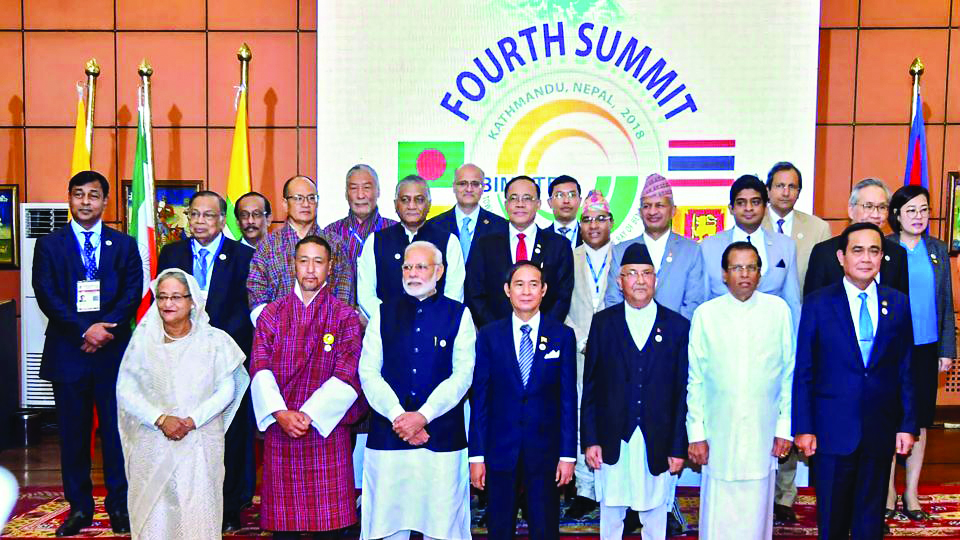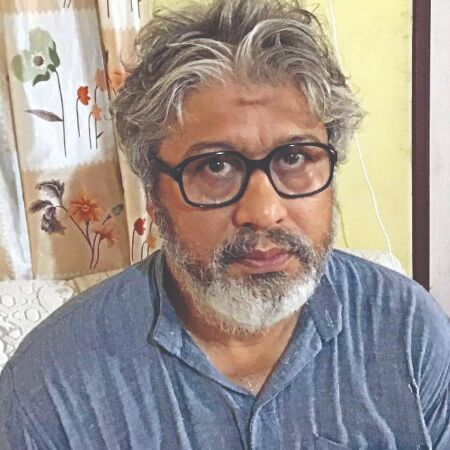Region of resplendence & abundance
BIMSTEC, a grouping representing a region with profound economic and ecological significance, provides India an ideal platform to lead the world, again, with its once-cherished panchsheel principle

India hosted the first meeting of the Governing Board of BIMSTEC Energy Centre (BEC) on February 27, 2023, in Bengaluru. Representatives of all BIMSTEC countries viz. Bangladesh, Bhutan, India, Myanmar, Nepal, Sri Lanka, and Thailand along with the BIMSTEC Secretariat attended the meeting. Considering the current energy scenario in the BIMSTEC region, the Meeting recommended adding the additional following areas under the specialized Wings of BEC: (a) Cyber Security, (b) Green Hydrogen (c) Energy Transition.
BEC has been established on the premise of the Central Power Research Institute (CPRI), Bangalore. In addition to this, BIMSTEC Centre on Weather and Climate (BCWC) has been established in the National Centre for Medium-Range Weather Forecasting (NCMRWF), Noida, Uttar Pradesh. The First Meeting of the Governing Board and Scientific Advisory Council of BCWC was held in New Delhi, on July 30, 2018.
Genesis
On June 6, 1997, representatives of the Governments of Bangladesh, India, Sri Lanka, and Thailand came together in Bangkok, and signed the ‘Declaration on the Establishment of Bangladesh-India-Sri Lanka-Thailand Economic Cooperation (BIST-EC)’. The main aim of the regional group was the promotion of economic cooperation between countries bordering the Bay of Bengal.
With Myanmar joining on December 22, 1997, the group was renamed BIMST-EC (Bangladesh, India, Myanmar, Sri Lanka, Thailand Economic Cooperation), and with the admission of Nepal and Bhutan during the 6th Ministerial Meeting in Thailand in July 2004, the grouping was renamed at the First Summit in Bangkok on July 31, 2004, as the Bay of Bengal Initiative for Multi-Sectoral Technical and Economic Cooperation (BIMSTEC).
BIMSTEC’s institutional evolution has been gradual. Following a decision at the 3rd BIMSTEC Summit in 2014, the BIMSTEC Secretariat was established in Dhaka, Bangladesh, to provide an institutionalized framework for deepening and enhancing cooperation. The BIMSTEC Charter was signed and adopted during the 5th BIMSTEC Summit held in a virtual format in Colombo, Sri Lanka, on March 30, 2022.
During the 2nd BIMSTEC Ministerial meeting held in Dhaka, Bangladesh, on November 19, 1998, six priority sectors had been identified for BIMSTEC Cooperation: (i) Trade and Investment (ii) Transport and Communication (iii) Energy (iv) Technology (v) Tourism, and (vi) Fisheries.
Then during the 8th Ministerial Meeting held in Dhaka, Bangladesh, on December 18-19, 2005, it had been decided to include seven more sectors, as identified by the First BIMSTEC Summit (Bangkok, Thailand, July 31, 2004), in the list of priority sectors of cooperation, expanding the total sectors of cooperation to 13: (vii) Poverty Alleviation (viii) Agriculture (ix) Cultural Cooperation (x) Counter-Terrorism and Transnational Crimes (xi) Environment and Disaster Management (xii) Public Health (xiii) People-to-People Contracts. The 14th BIMSTEC Ministerial Meeting, held in Nay Pyi Taw, Myanmar, on March 3, 2014, has decided to include the 14th priority sector of cooperation: (xiv) Climate Change.
India is the lead country in the Security Sector which comprises three sub-sectors, namely Counter Terrorism and Transnational Crime (CTTC), Disaster Management, and Energy. Bhutan is the leading country in the Environment and Climate Change Sector.
Leveraging BIMSTEC
The South Asian Association for Regional Cooperation (SAARC) – established in 1985, has become defunct now. The last SAARC Summit was held in Kathmandu in 2014. Even the annual SAARC foreign minister’s meeting, which usually happens on the sidelines of the United Nations General Assembly (UNGA) summit in New York, was cancelled in 2022.
The ruling Bharatiya Janata Party in its election manifesto in 2019 did not include SAARC as a forum for regional cooperation. Instead, the manifesto categorically said, “to forward our ‘neighbourhood first’ policy, we will extensively leverage forums such as BIMSTEC, to accelerate regional coordination and economic cooperation with countries in our neighbourhood.” In June 2019, shortly after he took charge as Foreign Minister, S Jaishankar remarked that SAARC has “issues” and therefore, India would look towards BIMSTEC as a priority over the next five years. Thus, BIMSTEC emerged as the most important platform for India’s ‘Neighborhoods First’ policy.
Sustainable energy and ecology
BIMSTEC is a densely populated region. Its share of land area in the world is only 3.8 per cent but as per 2019 data, it hosts 21.9 per cent (1.65 billion) of the world’s population, generates 4.3 per cent of world GDP, and has a 4 per cent share of the global trade. Though the BIMSTEC region consumes less than 8 per cent of the total energy consumed globally and emits around only 7 per cent of the world’s carbon dioxide, any intervention in the BIMSTEC region in terms of energy management and climate action has the potential to impact nearly 22 per cent of the world’s population.
BIMSTEC is one of the most spectacular bio-diverse regions of the world and home to numerous vertebrates (fishes, reptiles, amphibians, birds, and mammals) and invertebrates, both terrestrial and aquatic. This region, which connects the ecologies of the Great Himalayas and the Bay of Bengal, also represents a wide diversity of different algae and seaweeds. Also, this is home to a large number of global wildlife such as Asiatic lions, one-horned Indian rhinoceros, striped hyenas, wild dogs, wild ass, etc.
The Bay of Bengal is home to a large network of mangrove forests of around 15,792 sq. km. and coral reefs of around 8,471 sq. km. The Bay is an important source of natural resources for a coastal population of approximately 185 million people. Around 4,15,000 fishing boats operate in the Bay and it is estimated that 33 per cent of fish stocks are fished unsustainably. The Bay of Bengal is one of the illegal, unreported, and unregulated (IUU) fishing hotspots in the Asia-Pacific.
Barring Sri Lanka (due to its geographical location), all BIMSTEC countries share riverine resources. India and Bangladesh share 54 rivers including the Ganges, Brahmaputra, and Meghna (GBM). Myanmar and Thailand share important rivers with the Salween forming a natural barrier between them. The catchments of rivers Puthimari, Pagladiya, Sunkosh, Manas, Raidak, Torsa, Aie, and Jaldhaka are common to India and Bhutan. Nepal and India share Mahakali and its tributaries.
Rivers are important to the livelihoods of fishing communities and contribute to the region’s food security. India and Bangladesh have yet to reach a Teesta water-sharing treaty. The use of the Salween continues to be a contentious issue between Thailand and Myanmar. With climate change-induced droughts and groundwater depletion, countries need to find more water for their populations. This will create competing claims over river water. To prevent erosion of trust and camaraderie, BIMSTEC offers a suitable platform to proactively deal with emerging threats.
Climate action plan
It is claimed that to succeed in limiting carbon emissions and global warming, the world urgently needs to use energy efficiently while embracing clean energy sources to make things move, heat up and cool down. BIMSTEC is playing an important role in facilitating this energy transition. Tables 1-5 document the energy usage pattern. Carbon emission mitigation policies table of BIMSTEC member states has been presented in Table 6.
Table 1, reveals that though energy consumption is very low, fossil fuel (coal, oil, and gas) dominates the energy mix of all the major economies of the bloc. Only India produces nuclear energy. Carbon emission levels of major BIMSTEC economies are also very low. (Table 2).
Table 3 shows, even in 2035, coal is expected to provide over half of the energy needs of the BIMSTEC region. The share of oil and gas will decline and renewable energy sources will contribute more.
While Bhutan and Nepal generate 100 per cent electricity using hydro resources, India generates 75 per cent of its electricity using coal. India also generates 8 per cent of its electricity from renewable sources. Myanmar relies mainly on hydro and natural gas for electricity generation and Thailand primarily uses natural gas for the production of electricity, refer to Table 4.
Barring Bangladesh, Nepal, and Myanmar, all other members have archived their goal of providing electricity to 100 per cent citizens of their respective countries. Nepal has the highest per capita (KgOE per annum) primary energy consumption, followed by Thailand. Bangladesh has the lowest per capita consumption, refer to Table 5.
It may also be mentioned that BIMSTEC Member states have a long history of bilateral cooperation in the electricity sector. There are cross-border transmission interconnections and cross-border power trade between many of the Member States. This includes the export of power from hydropower plants in Bhutan to India, and the import of power from India, by Bangladesh and Nepal.
On climate policy (refer to Table 6) all the member states of BIMSTEC have formulated specific target-based programs aligning those with their ‘nationally determined commitments (NDC) made to United Nations Framework Convention for Climate Change (UNFCCC).
Conclusion
In the emerging multipolar world, if India, the leader of the erstwhile non aligned movement (NAM), wishes to play an important role then the NAM policy of a sovereign state which does not align itself with any of the power blocs, and at the same time, actively participates in the world affairs to promote international peace, harmony, and cooperation, should be revived and propagated. The basic principles of NAM were: mutual respect for each other’s territorial integrity and sovereignty; mutual non-aggression; mutual non-interference in domestic affairs; equality and mutual benefit; and peaceful co-existence. BIMSTEC offers an ideal platform for India to lead the world on the basis of these five principles of Panchsheel!
Views expressed are personal



